Why 'The Talented Mr. Ripley' Deserves to Be Loved
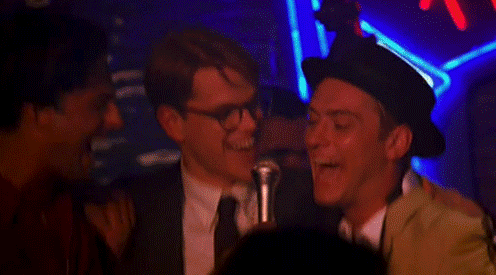
Last year inspired a number of website and magazine features paying homage to 1999, which Esquire dubbed “the last great year in movies.” It was inarguably a golden year for film lovers, but amid all the praise for groundbreaking films like Being John Malkovich, Magnolia, Fight Club, The Blair Witch Project, and The Matrix, one of the finest movies of 1999 has been largely overlooked: The Talented Mr. Ripley, director Anthony Minghella’s psychological thriller based on the 1955 Patricia Highsmith novel.
When Ripley was released in December 1999, its stars were all in their early prime: Matt Damon was the likable fellow from Good Will Hunting and Saving Private Ryan, Gwyneth Paltrow was Hollywood’s hottest young actress, Jude Law was teetering on the brink of mega-stardom, Cate Blanchett was coming off Elizabeth, and Philip Seymour Hoffman was already an icon of the new indie film boom. Minghella was a prestige director whose previous film was the 1996 Best Picture winner The English Patient.
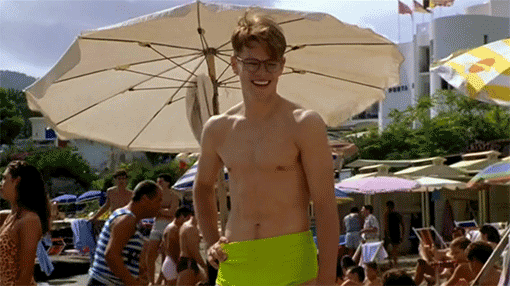
Yet somehow, The Talented Mr. Ripley, which made almost $125 million in worldwide box office and earned 6 Oscar nominations, failed to make a lasting impression on audiences and critics. Until Gone Girl novelist and screenwriter Gillian Flynn started mentioning the movie as an influence in her press rounds last fall, The Talented Mr. Ripley seemed in danger of being forgotten entirely. With Jude Law appearing in this month’s submarine thriller Black Sea and Gwyneth Paltrow in the comic caper Mortdecai, it’s high time for audiences to recognize that Ripley is one of the finest films its A-list cast ever made.
Set in the 1950s, The Talented Mr. Ripley takes place in two acts. The first half introduces us to Tom Ripley (Matt Damon), a hustling piano player who allows himself to be mistaken for a Princeton graduate at a society party. The ruse allows him to enter into an upper-crust world he’s only seen from afar. In no time, Ripley finds himself on a boat to Italy, where he’s been sent to retrieve gadabout shipping heir Dickie Greenleaf at the behest of his exasperated father. Once he arrives, Tom becomes infatuated with the gorgeous Dickie (Jude Law), his fiancée Marge Sherwood (Gwyneth Paltrow), and their life of sun-kissed, seaside leisure. So does the film’s audience.
Director Anthony Minghella films Ripley’s Italy like it’s a Renaissance painting, shot through with golden light and deep, luxurious blues. Like a museum visitor, Tom is often seen observing this beauty from a distance. Minghella shoots over Damon’s shoulder so we share his perspective as he stands on balconies, at windows, and on ship decks. In the ’90s, an era of fast cuts and green screens, Minghella’s idealized location shots felt like a throwback to older movies. But they serve a purpose here, not only giving the film a Hitchcockian scope (with the requisite scenes aboard trains and ships), but showing the audience that the world of the film is just as inaccessible to us as it is to Tom.
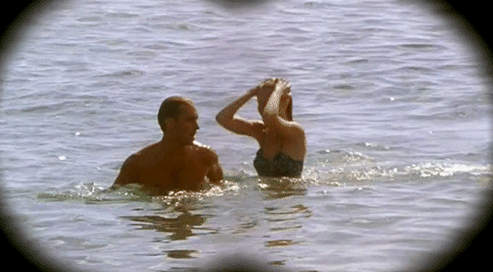
It’s the perfect casting of the supporting roles that makes the whole vision fall into place. In contrast to boy-next-door Damon, Jude Law and Gwyneth Paltrow (as Dickie and Marge) are as aloof and beguiling as royalty. Minghella, a Brit himself, believed that Law would be better equipped than an American actor to highlight Dickie’s subtle class elevation. “I thought that, in a film that was so much about the desire to be somebody, who else would you rather be than Jude Law?” the late director says in a behind-the-scenes featurette. And Law, the only actor in the film to receive an Oscar nomination, is perfection. Handsome and effortlessly charismatic, he never tries to convince the audience that Dickie is anything but an awful, arrogant prick. He just makes it irrelevant. Who wouldn’t tolerate Dickie’s fickle loyalty and entitled rants in exchange for the chance to bask in his rarified glow?
As for Paltrow, she projects that same level of privilege and allure in a much more sympathetic character. Shakespeare in Love was still unreleased when Minghella cast Paltrow as Marge, so she wasn’t yet the A-list star she would soon become. She’s radiant in Ripley and anchors the film with what appears to be genuine kindness amid all the fakery. Equally captivating is the work done by Blanchett and Hoffman, both of whom play against type as socialites caught in Dickie Greenleaf’s orbit. Blanchett dims her aristocratic aura to play Meredith Logue, an heiress who seems nearly as insecure about her place in the social hierarchy as Ripley himself. Hoffman’s character, Freddie Miles, is one of his most memorable creations, a crass and callous child of privilege who first appears driving his Alfa Romeo into the middle of a piazza.
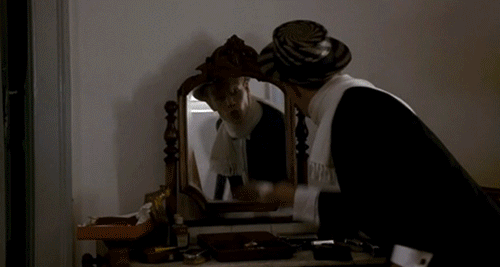
In retrospect, it makes sense that Law received so much awards recognition, given that Dickie was a breakthrough role for the actor. But it’s surprising how little acknowledgment was given to Damon, who had by far the trickiest role to play in Ripley. At the start of the film, Tom is something of a blank slate, stealing characteristics — voices, signatures, mannerisms — from the people around him. As he becomes more ingratiated into Dickie and Marge’s life, Tom becomes laser-focused on Dickie, adapts to his likes and dislikes, and eventually, begins to physically resemble him. Minghella and Damon pull off a spectacular, no-FX magic trick in making Damon a Jude Law lookalike, as he gradually loses his hunched posture, coke-bottle glasses, and nervous smile. Just before Tom literally steals Dickie’s identity, there’s a scene in which the actors sit side-by-side on a train, and in their reflection, we notice for the first time the similar clefts in their chins. By the end of the film, Tom is struggling to shed Dickie’s identity and take on his own, but he’s lost at sea: He has no idea who the real Tom Ripley is.
The film’s second act turns Ripley into a full-on thriller. Minghella tightens the screws so efficiently that every 15 minutes or so, we’re convinced that Tom is about to be caught. Ripley’s piano, the one remaining token of his true identity, is cleverly used to ratchet the tension. At one point, a sneering Freddie questions Tom about Dickie’s whereabouts while idly fingering a single high note over and over, providing a Bernard Hermann-like score to the interrogation. Ripley continues to wriggle free until the very end, when he’s caught in a web of his own construction.
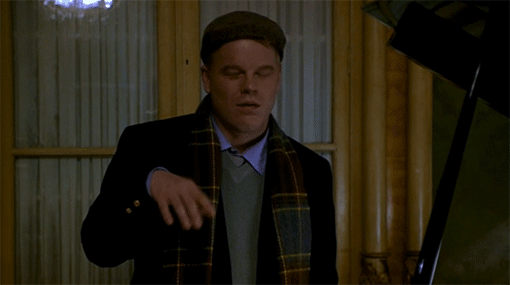
Minghella and Damon’s finest trick — better, even, than making the two lead actors look like fraternal twins — is to make the audience feel deeply conflicted about Ripley’s fate. He’s not a “likeable” protagonist, of the type that some critics desperately tried to find in Gone Girl. Ripley does terrible things. He lies more often than he tells the truth. But, the character (in the film, at least — the books paint a different picture) is not a ruthless, calculating con man. Damon imbues his performance with a lonely ache that is so raw, it’s sometimes uncomfortable to watch. Ripley wants nothing more than to erase himself and become someone else, someone who he thinks is worthy of love. (And make no mistake, he’s in love with Dickie; the gay subtext is basically just text.) Unfortunately, Ripley finds that everywhere he goes, there he is — like the scene in which he drives a Vespa through a street lined with antique bureaus and vanities, a literal hall of mirrors. Who among us can’t relate to Ripley’s desire to “take the past and put it in a room in the basement?” That’s why the ending of the film, which departs radically from the novel, is such a punch in the gut. Tom’s lies catch up to him just as he finds someone who truly loves the real Tom. He has the chance to start over, and in one tragic moment of self-loathing, he destroys it.
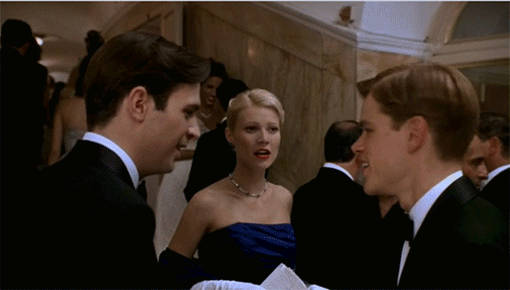
This decision to depart from Highsmith’s characterization of Ripley as a detached sociopath was controversial with critics, who by and large liked the film. “What was a cool, premeditated murder in the book becomes a spontaneous crime of passion… (Ripley) has been turned into a case study,” Newsweek’s David Ansen complained. In fact, the emotional nuance of Ripley’s character, his transformation into the monster he always feared himself to be, is a detail that makes the film feel fresh 15 years later. As a culture, we’re increasingly obsessed with the fine line between sanity and madness, and what makes a person become a criminal. Ripley never fully reveals Tom’s past, but his journey into depravity feels authentic.
Even back in 1999, The Talented Mr. Ripley didn’t really get the recognition it deserved. In the shadow of The English Patient and Shakespeare In Love, it’s possible that Ripley was written off as yet another Miramax Oscar magnet period piece. There also seems to have been an element of discomfort with Damon’s performance. Critical reactions to him were divided — The Village Voice’s Amy Taubin wrote that Damon showed “signs of wanting to dirty up his American golden boy image” but was “in over his head” — and it seems that some audiences just weren’t ready to watch Will Hunting transform into a sexually ambiguous murderer. Law, on the other hand, they loved. (There’s some life–imitating–art irony there.)
Today Ripley seems to be viewed as a footnote in the career of its impressive cast, who went on to more iconic roles and greater box-office success. The film received a flutter of recognition following Hoffman’s tragic death in 2014, with critics like The New Yorker’s David Denby citing his performance in Talented Mr. Ripley as one of his finest. The same could be said of any actor in the film. Each of their characters balances on a razor’s edge between who they really are and how they wish to be seen. That balancing act feels as relevant as ever, and Minghella’s Italy remains both a dream and a nightmare, a beautiful world that will always be just out of reach.
